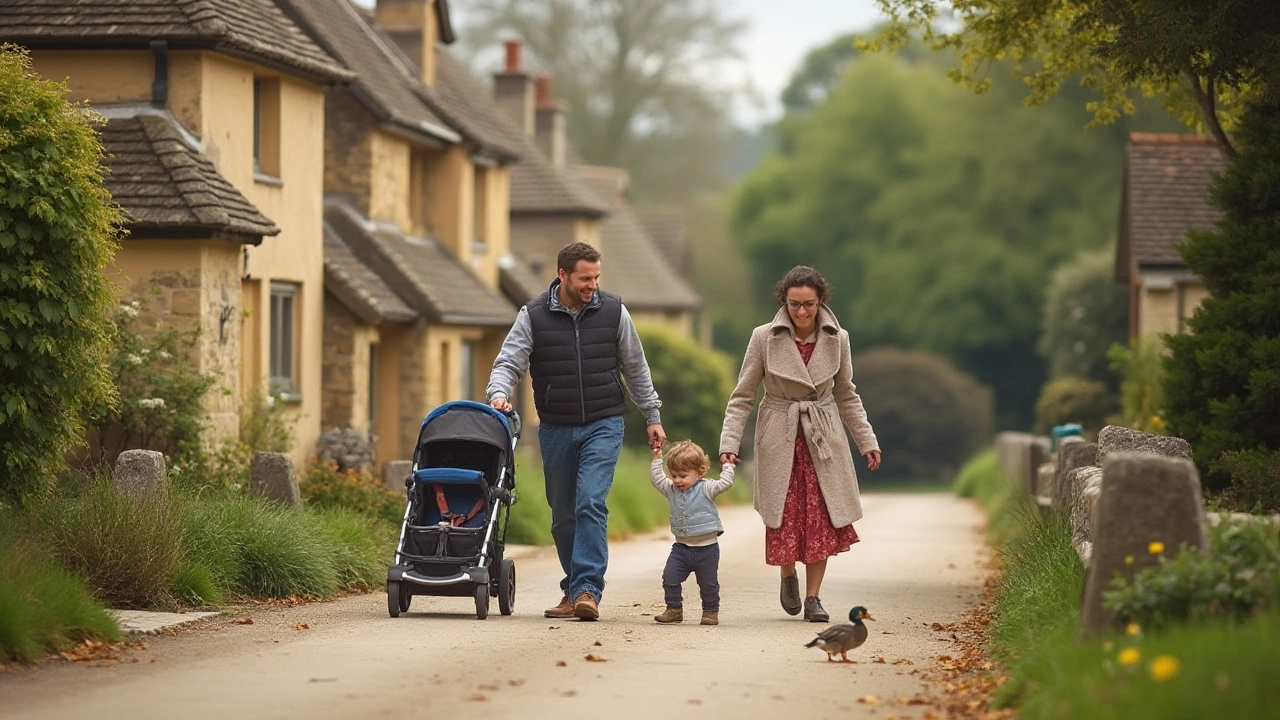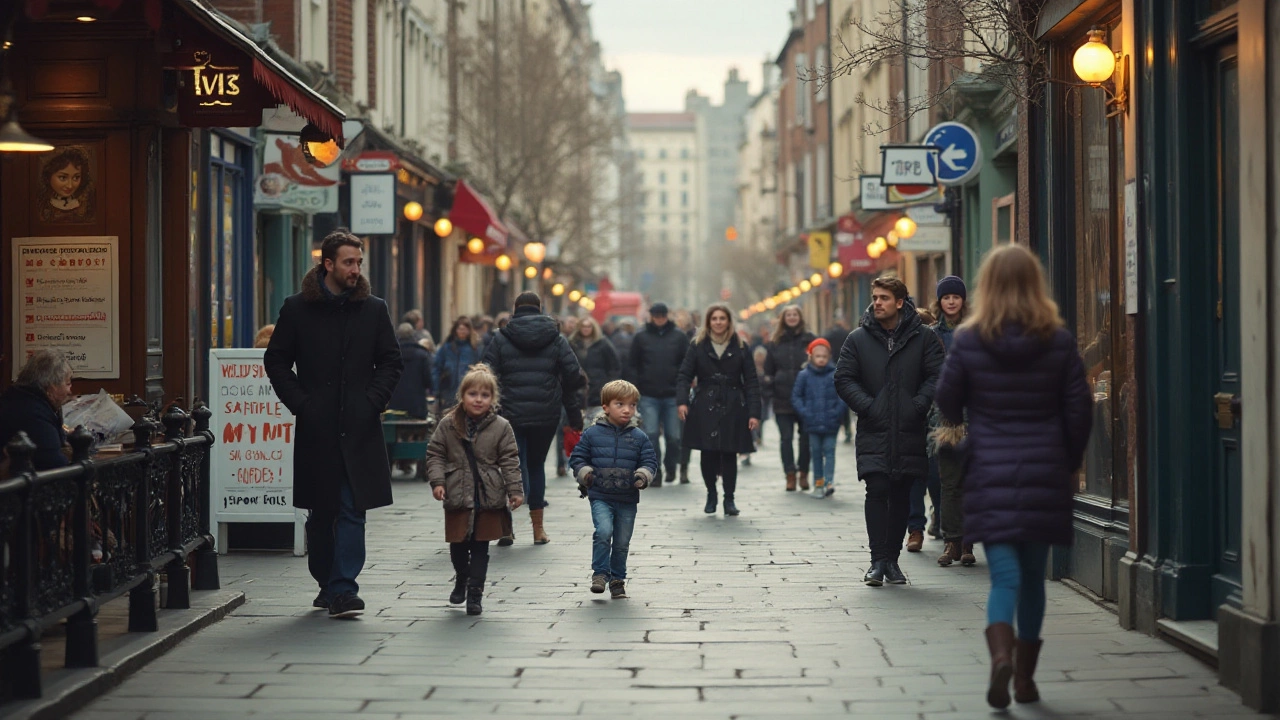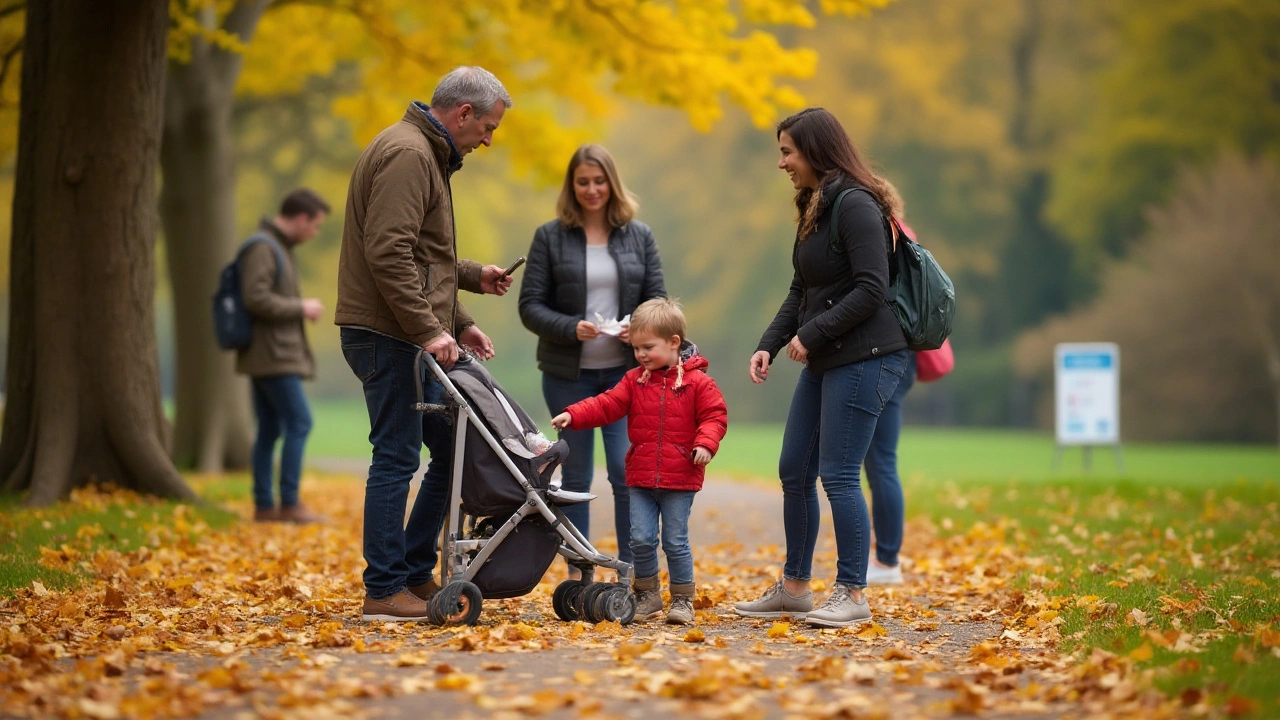As parents, we often find ourselves at crossroads of decision-making, especially when it comes to our kids' growing needs. One common question revolves around strollers and whether a three-year-old has outgrown them.
While some toddlers have the energy and curiosity to walk for longer stretches, others might still enjoy—or even need—that ride in their trusty stroller.
In this guide, we've delved into the development of three-year-olds, understanding when and how strollers might still be relevant and beneficial. It’s not about rushing decisions but finding what's best for your little one and your family's lifestyle.
- Developmental Milestones for Three-Year-Olds
- Are Strollers Still Useful for Toddlers?
- Signs It's Time to Ditch the Stroller
- Balancing Independence and Safety
- Lifestyle Considerations for Parents
- Expert Opinions and Parental Experiences
Developmental Milestones for Three-Year-Olds
As they toddle towards the ripe age of three, children experience an incredible array of developmental milestones that greatly shape their mobility, behavior, and independence. During this period, they commonly develop refined motor skills, notable language growth, and social awareness that help them interact with the world in more sophisticated ways. Physically, most three-year-olds are able to walk in a more coordinated fashion, move up and down stairs using alternate feet, and even engage in basic running or climbing activities. These new abilities not only witness the broadening of their physical capabilities but also highlight growing independence, which might make the stroller for toddlers less appealing or necessary.
On the linguistic front, a three-year-old typically shows dramatic progress, forming simple sentences and even engaging in brief conversations. This burst in communication skills is enriched by a child's innate curiosity, sparking endless questions about the world around them. Such interactions can happen easily on a stroller ride, as pointed out by child development experts. They emphasize that this age is all about exploring surroundings actively yet safely.
Socially and emotionally, children at this stage begin asserting themselves, often craving both independence and reassurance from familiar adults. They are known for a vivid imagination and are likely to engage in pretend play, which can be facilitated both during walks and while seated in a stroller, depending on the child's preference and comfort. Most parents observe an increased tendency among toddlers to express preferences, which can occasionally lead to the refusal of a stroller ride in favor of walking independently.
"Three-year-olds are wonderful explorers at heart. They are evolving from dependence on their parents to a newfound sense of individuality," notes Dr. Ellen Jacobs, a renowned pediatrician.
Cognitive improvements also blossom at this age, as children start to understand the concept of counting and sorting on simpler levels, skills that can be turned into fun 'games' during outings. Engaging a toddler’s mind while considering their physical readiness is pivotal in deciding on the toddler stroller age appropriateness. Nonetheless, even as they leap forward in their abilities, many three-year-olds may still appreciate the post-stroller pit-stop during long family outings, considering their energy reserves and endurance are just in their early developmental stage.
Recognizing and adapting to these evolving abilities can significantly inform whether or not it’s time to store away the stroller. Parents find that understanding their child's developmental status, beyond just physical needs, is crucial in making stroller decisions. Though they may reach many milestones, each child is unique, and following their lead and comfort level is key. An adaptable approach respecting a child's individual pace helps nurture not just their budding independence but also their overall ease and happiness during family adventures.
Are Strollers Still Useful for Toddlers?
As toddlers approach the age of three, parents often ponder whether it's time to part ways with their trusty strollers. While a child's energy levels are building, making them more inquisitive and eager to walk, strollers still hold valuable benefits during this transitional phase. At this age, children are developing physically and emotionally at a rapid pace. They might experience bursts of energy one moment and tire quickly the next. A stroller gives toddlers a chance to rest during family outings, enabling parents to handle errands or enjoy longer excursions without constant interruptions.
A stroller provides security during busy trips to places like shopping malls or crowded festivals, where toddlers may easily get overwhelmed. Safety is another reason strollers can be useful. Keeping a toddler secure in a stroller can be crucial in environments where they can't roam freely. For example, near busy streets or in airports, the stroller acts as a dependable aid, giving peace of mind to the parent.
Weather conditions are another crucial consideration. Unexpected weather changes can affect a toddler's mood and well-being. Strollers often come equipped with canopies or rain covers, protecting your child from unpredictable elements such as direct sunlight, rain, or wind. Also, modern strollers have ample storage space for essentials, such as snacks, toys, and nappies, making them functional beyond mere transportation.
While some parents worry that continuous stroller use might impede their child's independence, it's important to remember that strollers offer numerous occasions for spontaneous naps and undisturbed moments of observation, both vital for a growing toddler. In any discussion of toddler transportation, an oft-cited source is Dr. Richard Rende, a developmental psychologist, who notes, "The stroller serves as a base from which children can explore their surroundings and get needed rest without compromising safety." To make an informed decision, each family should weigh their unique circumstances. Perhaps you live in a bustling city where walking everywhere is impractical, or perhaps you’re preparing for a family holiday where long walks and sightseeing are on the agenda. Whatever your situation, the stroller's role can be essential, and its usefulness continues as you navigate parenthood with your growing toddler.

Signs It's Time to Ditch the Stroller
Deciding to phase out the toddler stroller can often feel daunting for parents. It's not just about convenience, but about recognizing your child's milestones and autonomy. When your toddler begins showing excitement about walking more independently, it could be the first hint they’re ready to leave the stroller behind. At the age of three, many children are eager to explore the world on foot, testing their blooming strength and endurance. Observing your child’s enthusiasm while walking, even for relatively long distances, can be an indicator. They might start resisting the stroller, preferring to walk beside you, taking pride in their independence.
A significant sign is when your child can walk around for an hour or more without asking to be carried. This demonstrates not only physical growth but also a readiness to leave the stroller stage behind. You might find that your little explorer starts negotiating 'on foot' trips to the park or play dates in the neighborhood. This can be encouraged by making walking a fun activity. Equip them with small backpacks or toys they can carry to add a touch of adventure. Incorporating frequent stops or playful distractions during walks can make the experience delightful and less monotonous for your child.
As Dr. Michael, a notable pediatrician, once said, "Children often express readiness for different milestones at their own pace. A parent’s role is pivotal in supporting and encouraging that transition."
Another poignant sign is the increased coordination and balance that comes with age. Most three-year-olds develop sufficient motor skills to navigate playgrounds or uneven terrains independently. With fine-tuned balance, children are less likely to stumble and can better handle physical challenges, such as stepping over obstacles or up and down curbs without assistance. Observing these changes in your child's capabilities is crucial. It not only signals physical readiness but also enhances confidence, which is vital for their development.
Finally, if using the stroller feels more cumbersome than helpful, it's probably time to reassess its necessity. Is the stroller being used more as a shopping cart or storage solution rather than for your child? This realization can often be the catalyst for change. Primitive hesitations of leaving the trusty stroller behind often revolve around convenience, but switching to practical alternatives like a walking helmet or scooter can provide both safety and excitement in this new phase.
Transitioning from a stroller for a toddler does not need to be abrupt. Gradual shifts, allowing for stroller-free outings, interspersed with stroller-dependent excursions, can ease concerns. Encouraging your child to walk during short trips initially can build their ability and stamina over time.
Balancing Independence and Safety
As toddlers turn three, they are bubbling with newfound independence, often eager to explore the world on foot. This stage is marked by a fascinating blend of energy and curiosity, much to the delight and sometimes anxiety of parents. Encouraging independence is vital at this age; it fosters confidence and helps toddlers develop essential motor skills and decision-making abilities. Allowing your child to walk through the park or accompany you on errands without the default stroller ride can be a significant developmental step. However, striking the right balance between giving them room to explore and ensuring their safety is crucial, given that their impulse control and awareness of potential dangers are still budding.
The question of using a stroller for toddlers at this age often hinges on practical considerations. Urban environments with busy streets or country trails with uneven terrains can present substantial safety challenges. In such scenarios, a stroller can serve as a safe retreat when little feet tire from all the walking or when the surroundings are too taxing to navigate. According to the Centers for Disease Control and Prevention, in 2021 injuries related to strollers were significantly lower when parents practiced situational awareness and used strollers in high-risk areas. This shows that proper use of strollers remains a vital aspect in preventing accidents during outings.
"When parents teach their children a balance between independence and safety, it empowers their young minds to learn more and venture around with confidence," says Dr. Mary Johnson, a renowned child psychologist.
Moreover, when considering the transition away from the stroller at this age, look for cues from your child. Some kids might express a strong desire to walk and explore on their own, while others might still request or hop back into the stroller when they feel tired or overstimulated. Respecting these signals assists in nurturing their autonomy while equally ensuring their physical well-being.
In family dynamics where there is more than one child, or when parents need to focus their attention momentarily elsewhere, strollers can offer a controlled space within public settings. Nonetheless, parents are encouraged to use transitions like these as teaching moments. Discuss safety rules, such as sticking close, holding hands in crowded areas, and making stopping points where both you and your child reaffirm the surroundings. These interactions reinforce the idea that while your child is growing more independent, safety is a learned responsibility that both parent and child can share. By melding these concepts, you ensure a smoother, safer transition to an independent walking experience, confirming the practicality of the stroller for toddlers as a supporting act rather than a primary means of transportation in your daily outings.

Lifestyle Considerations for Parents
Navigating toddlerhood presents a unique set of challenges and joys, especially when you're figuring out the logistics of your family’s routine. The decision to continue using a stroller can be influenced by many factors—such as your daily schedule, terrain you usually traverse, and your toddler’s energy levels. It's vital to weigh these lifestyle aspects to determine if a stroller for toddlers remains a suitable choice for your family.
For parents living in urban areas, the hustle and bustle of city life often demands convenience. A stroller can be indispensable when you're navigating crowded sidewalks, public transportation, or bustling streets. City life can tucker out even the most energetic of the three-year-olds, and having the option to let your child rest comfortably can make a world of difference in your day. Conversely, parents living in rural settings might find that while there’s more space for their child to roam free, the terrain can sometimes pose a challenge, making the stroller a welcome companion for those longer outdoor adventures.
Another crucial factor is the daily routine and commitments you as a parent have. If you're juggling multiple tasks or have other children, a stroller can provide the additional security of knowing that your child is safe and contained while you're focused on getting things done. Interestingly, a well-designed stroller can also double as a little storage wagon for brief trips, letting you juggle bags, groceries, or even your toddler’s toys without fuss.
"Take the time to consider your family's specific circumstances and priorities. There is no one-size-fits-all answer, and understanding your unique needs will help you make the best decision," advises Dr. Lisa Stern, a parenting expert with over two decades of experience in child development.
With today’s fast-paced world, convenience is often at the forefront of decision-making. Many parents working from home might find it easier to take meetings on-the-go and incorporate a leisurely stroll with their child. In fact, it can be a delightful way to incorporate family time into your hectic schedule, giving your toddler exposure to various environments, which is immensely beneficial to their cognitive development.
Moreover, when planning vacations or frequent trips, a stroller can be a lifesaver. An adaptable, lightweight stroller model can make travel less stressful, offering a familiar comfort zone for your young traveler in bustling airports or crowded theme parks. So, before you decide to pack away that toddler equipment, consider how it complements your travel habits and overall family activities. With these insights, you can tailor your approach to suit your family’s needs while nurturing the independence of your growing child.
Expert Opinions and Parental Experiences
When addressing whether a toddler stroller for a three-year-old might be a necessity, it's vital to incorporate both expert insights and the real-life stories shared by parents. Pediatricians often highlight the importance of understanding a child's developmental trajectory. While three-year-olds usually have enough stamina for short walks, they can tire quickly, especially on longer outings or busy days. As Dr. Amelia Woods, a pediatric developmental specialist, notes, 'Parents need to assess their child's energy levels and coordination, which can vary greatly even among children of the same age.'
Beyond the medical perspective, hearing directly from parents can offer valuable insights. Many parents share stories of their own experiences, highlighting both challenges and victories when managing the transition from stroller to full-time walker. A mother of twins from Oregon mentioned how she continued to use their strollers for toddlers during family outings lasting more than a couple of hours. She said, 'The stroller became a comforting safe haven when my kids were exhausted or overwhelmed by crowds.'
It’s not uncommon to notice a shift in perception as children grow older. Some parents speak about the pressure to wean their children off strollers as soon as they hit certain milestones. This societal expectation can sometimes lead to a premature switch that may not suit every child. It's crucial to strike a balance between nurturing independence and ensuring comfort and safety. One dad confessed that he initially hesitated to keep using the stroller for his three-year-old but soon realized it was a practical tool during vacation trips. 'The stroller didn't just carry our child; it carried snacks, water bottles, and all the magical treasures we collected on our adventures.'
'Don’t feel compelled to retire your stroller just because someone says three is the magic cutoff. Parenting isn’t about ticking boxes; it’s about supporting your child’s individual needs,' advises Wendy Shapiro, a child development advocate and writer.
For many, the decision ultimately revolves around family lifestyle and personal choice. Data from a 2024 parental survey revealed that 60% of parents in urban environments continued using a stroller for toddlers aged three and above, attributing it largely to the practicality of managing crowded public transport and long walks. Understanding the harmony between expert opinion and parental instinct aids greatly in choosing a path right for both child and family. This lovely, albeit often chaotic, journey doesn't come with a manual, but shared experiences and professional insights certainly pave the way for informed decisions.
